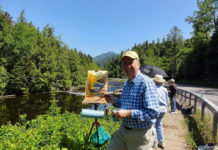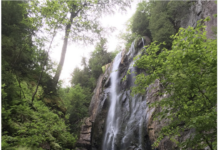
New Albany, Indiana, is celebrating its bicentennial with an exhibition of paintings titled The Artists of the Wonderland Way. The art was created by Indiana artists who were members of the Wonderland Way Art Club in the 1920s and 1930s.
This exhibition explores artworks created just before World War I and in the inter-war years of the 1920s and 1930s by local artists who were members of the Wonderland Way Art Club. The Carnegie Center for Art and History in New Albany, Indiana, will present the exhibition until April 6, 2013, in celebration of New Albany’s bicentennial.

“Beharrell Avenue,” by Paul Plaschke, 14 5/8 x 12 1/2 in. Clifton Anderson Collection
The 1906 opening of the Art Shop in New Albany by James L. Russell created an influential venue for regional art in the Southern Indiana and Louisville, Kentucky, area, and a gathering place for such artists as Joseph Krementz, Ferdinand Graham Walker, Harvey Joiner, Paul Plaschke, John Bauscher, Grover Page, Orville Carroll, and Russell and his son, James J. Russell. The Art Shop was a combination art supply shop and gallery, and the Wonderland Way Art Club was born there.

“The Walker Homeplace,” by Ferdinand Graham Walker, oil, 8 x 10 in. Collection Warren and Julie Payne
The artists who formed the club were inspired by, and took the club’s name from, a network of roads going along the Ohio River from Cincinnati, Ohio, to Mount Vernon, Illinois. The roads were designated the Wonderland Way in the years immediately after World War I in an effort to promote tourism by automobile. New Albany was one of the major Indiana cities on the route, along with Madison, Jeffersonville, Corydon, and Evansville. While the Wonderland Way Art Club itself had a short life, the name endures to describe those artists who frequented the Russell Art Shop from the World War I era to the start of World War II.
There will be several educational programs in conjunction with the exhibition. For more information, visit www.carnegiecenter.org.




